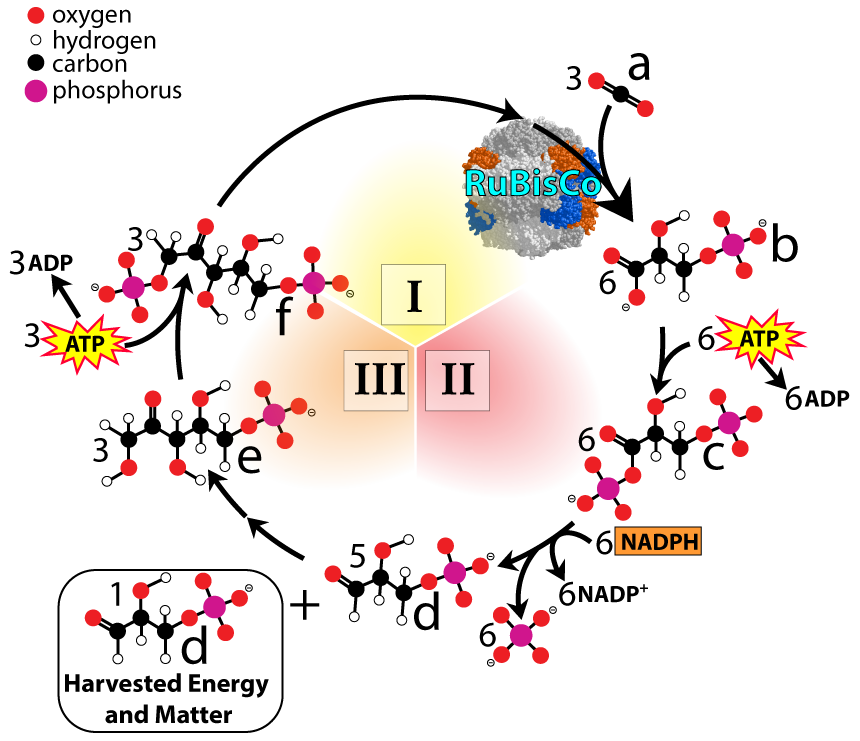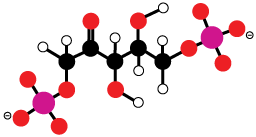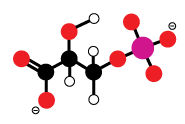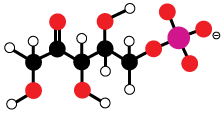Page outline
1. Introduction
Let’s begin with an interactive reading to review some of what we’ve learned so far.
[qwiz qrecord_id=”sciencemusicvideosMeister1961-Photosynthesis, Interactive Reading Review (HS)”]
[h]Photosynthesis, Interactive Reading
[i]
[q dataset_id=”SMV_PSN_Part 5 (Calvin Cycle) Introduction|171ddd77ccc756″ question_number=”1″]We’ve seen so far that photosynthesis involves two phases. The one indicated by roman numeral “II” is called the [hangman] cycle.
[c]Q2Fsdmlu
Cg==[Qq]
[q dataset_id=”SMV_PSN_Part 5 (Calvin Cycle) Introduction|171d9e9a8bbb56″ question_number=”2″]The Calvin cycle takes the outputs from the light reactions, and along with carbon dioxide, uses them as inputs. Which number indicates carbon dioxide?
[textentry single_char=”true”]
[c]Ng ==[Qq]
[f]WWVzLiDigJw24oCdIGlzIGNhcmJvbiBkaW94aWRl[Qq]
[c]Kg==[Qq]
[f]Tm8uIEhlcmUmIzgyMTc7cyBhIGhpbnQuIEZpbmQgYW4gYXJyb3cgdGhhdCYjODIxNztzIGdvaW5nIGludG8gdGhlIENhbHZpbiBjeWNsZSwgYnV0IHdoaWNoIGlzIG5vdCBvbmUgb2YgdGhlIG91dHB1dHMgb2YgdGhlIGxpZ2h0IHJlYWN0aW9ucy4=
Cg==[Qq]
[q dataset_id=”SMV_PSN_Part 5 (Calvin Cycle) Introduction|171d6211569356″ question_number=”3″]Carbon dioxide, at “6,” is an external input of the Calvin cycle. There are also two internal inputs. One of these is the electron carrier molecule [hangman], which is shown at “5.”
[c]TkFEUEg=
Cg==[Qq]
[q dataset_id=”SMV_PSN_Part 5 (Calvin Cycle) Introduction|171d2588216b56″ question_number=”4″]One of the internal inputs of the Calvin cycle is the electron carrier NADPH, shown at “5” below. The other input is [hangman], indicated by “4.”
[c]QVRQ
Cg==[Qq]
[q dataset_id=”SMV_PSN_Part 5 (Calvin Cycle) Introduction|171ce8feec4356″ question_number=”5″]While the light reactions occur in the thylakoid sacs, the Calvin cycle occurs in the [hangman].
[c]c3Ryb21h
Cg==[Qq]
[q dataset_id=”SMV_PSN_Part 5 (Calvin Cycle) Introduction|171ca7cd9f5356″ question_number=”6″]Which letter or number shows the structures that carry out the light reactions?
[textentry single_char=”true”]
[c]YQ ==[Qq]
[f]WWVzLiBMZXR0ZXIg4oCcYeKAnSBpbmRpY2F0ZXMgdGhlIHRoeWxha29pZHMu[Qq]
[c]SQ ==[Qq]
[f]WWVzLiAmIzgyMjA7SSYjODIyMTsgc2hvd3MgYSBzdGFjayBvZiB0aHlsYWtvaWRzIChhbmQgaW5kaWNhdGVzIHRoZSBsaWdodCByZWFjdGlvbnMpLg==[Qq]
[c]Kg==[Qq]
[f]Tm8uIEhlcmUmIzgyMTc7cyBhIGhpbnQuIFRoZSBsaWdodCByZWFjdGlvbnMgb2NjdXIgaW4gdGhlIHRoeWxha29pZCBzYWNzLCB3aGljaCBhcmUgdGlueSBvdmFsIHN0cnVjdHVyZXMgd2l0aGluIHRoZSBjaGxvcm9wbGFzdCwgb3JnYW5pemVkIGludG8gc3RhY2tzLg==
Cg==[Qq]
[q dataset_id=”SMV_PSN_Part 5 (Calvin Cycle) Introduction|171c68f05e4756″ question_number=”7″]Which letter or number shows the region of the chloroplast where the Calvin cycle takes place? (Note: don’t enter a roman numeral)
[textentry single_char=”true”]
[c]Yg ==[Qq]
[f]WWVzLiBMZXR0ZXIg4oCcYuKAnSBpbmRpY2F0ZXMgdGhlIHN0cm9tYSwgd2hpY2ggaXMgd2hlcmUgdGhlIENhbHZpbiBjeWNsZSB0YWtlcyBwbGFjZS4=[Qq]
[c]Kg==[Qq]
[f]Tm8uIEhlcmUmIzgyMTc7cyBhIGhpbnQuIFRoZSBDYWx2aW4gY3ljbGUgb2NjdXJzIGluIHRoZSBlcXVpdmFsZW50IG9mIHRoZSBjeXRvcGxhc20gb2YgdGhlIGNobG9yb3BsYXN0JiM4MjExO3RoZSBmbHVpZCB0aGF0IGlzIGJldHdlZW4gdGhlIHRoeWxha29pZHMgYW5kIHRoZSBjaGxvcm9wbGFzdCYjODIxNztzIGlubmVyIG1lbWJyYW5lLg==
Cg==[Qq]
[q dataset_id=”SMV_PSN_Part 5 (Calvin Cycle) Introduction|171c256b057356″ question_number=”8″]The purpose of photosynthesis, from a plant’s perspective, is to create the substance represented by which number on the diagram below?
[textentry single_char=”true”]
[c]Nw ==[Qq]
[f]WWVzLiBMZXR0ZXIg4oCcN+KAnSBpbmRpY2F0ZXMgYSBzaW1wbGUgc3VnYXIgc3VjaCBhcyBnbHVjb3NlLiBTeW50aGVzaXppbmcgZ2x1Y29zZSBpcywgZnJvbSBhIHBsYW50JiM4MjE3O3MgcGVyc3BlY3RpdmUsIHRoZSBwdXJwb3NlIG9mIHBob3Rvc3ludGhlc2lzLg==[Qq]
[c]Kg==[Qq]
[f]Tm8uIEhlcmUmIzgyMTc7cyBhIGhpbnQuIFRoZSBwdXJwb3NlIG9mIHBob3Rvc3ludGhlc2lzLCBmcm9tIGEgcGxhbnQmIzgyMTc7cyBwZXJzcGVjdGl2ZSwgaXMgdG8gY3JlYXRlIHN1Z2FycyB0aGF0IGNhbiBiZSB1c2VkIGZvciBncm93dGggYW5kIGZvciBlbmVyZ3kuIFdoaWNoIHBhcnQgb2YgdGhlIGRpYWdyYW0gY291bGQgcmVwcmVzZW50IGEgc3VnYXI/[Qq]
[x][restart]
[/qwiz]
2. The Calvin Cycle
So far in this series of tutorials, our view of the Calvin Cycle has involved the diagram shown below (and which you just worked with in the quiz above). The source of the carbon dioxide that enters the Calvin Cycle is the air (or water, if this is a plant that lives in the water). NADPH and ATP enter the cycle from the light reactions. Using these inputs, the Calvin cycle produces simple sugars. These sugars are the building blocks of other carbohydrates, as well as all of the other molecules (lipids, proteins, nucleic acids) that a living cell needs.

By the end of this tutorial, you should be able to explain what’s going on in the much more detailed Calvin Cycle diagram below. This diagram might look terribly complex, but we’re going to walk through it step by step.
Before starting, here are a few points to keep in mind.
- Note that you can scroll the text below the diagram so that you can easily look at the diagram while reading about it.
- In many courses, you won’t be required to learn the name of most of the molecules shown in the diagram below. The important ones are
- Molecule “f.” This molecule is called RuBP, and it can be thought of as the cycle’s starting compound
- Molecule “d.” This molecule is called G3P, and it’s the molecule that gets harvested from the cycle.
Molecule “a” is one that you probably already know. It’s carbon dioxide (CO2).
All the other molecules can be thought of as intermediate compounds. That means that they come in-between other key molecules. I might mention their names but (unless you hear something different from your instructor) you don’t need to memorize them.

Let’s start by talking about how the diagram above works. First, let’s focus on the outer circle, with all the structural formulas.
- There’s a legend on the top left, which tells you how to identify the carbon, hydrogen, oxygen, and phosphorus atoms that make up the molecules involved in the cycle.
- The letters “a” through “f” next to the structural formulas in the diagram represent molecules involved in the cycle. With two exceptions (“f” and “d”), the specific names of these molecules are not important.
- The numbers “1,” “3,” “5,” or “6” next to the structural formulas indicate the number of molecules.
For example, find the letter “a” in the top right of the diagram (at about 1 o’clock), This molecule is carbon dioxide. How do you know? It has one carbon atom (black circle) and two oxygen atoms (red circles). The “3” next to the structural formula indicates that there are three carbon dioxide molecules entering the cycle. Why does that matter? Because the Calvin cycle is how matter enters the living world, and it’s only by following the number of molecules (and atoms) that we’ll be able to see that happening.
Now let’s look at the the Roman numerals (I, II, and III) in the center of the diagram. These refer to the phases of the Calvin cycle. These phases are:
- I. Carbon fixation: absorbing carbon dioxide from the atmosphere.
- II. Energy Investment and Harvest: adding energy from the products of the light reactions, followed by harvesting molecules that can be made into simple sugars.
- III. Regeneration: rebuilding the compounds required for the cycle to continue to run.
Now let’s look at each phase in detail.

Phase 1: Carbon Fixation
Phase 1 is called carbon fixation. It’s called that because it takes disorganized carbon dioxide gas that was floating around in the air, and fixes it into solid carbohydrates. Here’s how.
Start by finding the molecule next to letter “f.” This molecule is called ribulose bisphosphate, or RuBP for short. The full name isn’t important, but it’ll be useful to remember RuBP, because it’ll come up again at the end of the cycle. Notice that this is a molecule with five carbon atoms (note the 5 black circles).
RuBP can be considered to be the starting point of the Calvin cycle. So, we’re going to start with three molecules of RuBP, for a total of 15 carbon atoms in the cycle. How did I get 15? There are 3 molecules of RuBP, each with 5 carbons. 5 times 3 equals 15.

Now, follow the arrow from RuBP to a model of an enzyme that’s labeled RuBisCo. Rubisco’s function is to take the 5-carbon RuBP that we just met and to combine it with carbon dioxide (shown at “a”).
The importance of what RuBisCo does — carbon fixation — can’t be overstated. All of the carbon atoms making up all of the carbohydrates, proteins, lipids and nucleic acids in every plant are there because of RuBisCo. That means that every carbon atom in you (and every other animal) is there because of RuBisCo. This is the basis of pretty much every food chain on Earth.
Back to the cycle. At step “a,” three molecules of RuBP are going to be combined with three molecules of carbon dioxide. Since RuBP has five carbon atoms and carbon dioxide has one, you would expect that the result would be three, six-carbon molecules. That is what happens, but that six-carbon molecule is so unstable that it has never been isolated. It immediately breaks apart into two three-carbon molecules, shown at letter “b.”

Because three of these six-carbon molecules have split themselves in half, we now have six three-carbon molecules. That molecule is called 3-phosphoglycerate. It’s shown at right, and also at letter “b” in the Calvin cycle diagram above. Again, the name of this compound is not important. What is important is the number of carbon atoms. Note that now we have a total of 18 carbon atoms present at this point in the cycle. How did I get 18? I multiplied the number of molecules (6) times the number of carbon atoms in each molecule (3) to get 18.
That’s it for carbon fixation, phase “I.” Here’s a fun fact about rubisco. It’s found in every chloroplast, in every leaf, in every algae, moss, fern, pine tree, and flowering plant. It’s also found in cyanobacteria. It’s thought that rubisco is the most abundant protein on Earth.
Phase II: Energy Investment and Harvest
In Phase II of the Calvin Cycle, enzymes take the three-carbon molecule that results from the carbon fixation phase and add energy to it. The energy comes from the ATP and NADPH that was produced during the light reactions.
- Between “b” and “c,” you can see a phosphorylation occurring. Phosphorylation means “receiving a phosphate group.” An enzyme takes a phosphate group from ATP and adds it to compound “b.” ATP becomes ADP, and the molecule at “b” becomes molecule “c.”
- Between “c” and “d,” several things happen. The first is an oxidation-reduction reaction. An enzyme takes electrons and hydrogens from NADPH, and adds it to molecule “c.” Molecule “c” is reduced, while NADPH is oxidized to NADP+. At the same time, a phosphate group is removed from molecule “c,” leaving us with molecule “d.”

Molecule “d” is glyceraldehyde-3-phosphate, or G3P. Along with RuBP, this is the only compound from the Calvin Cycle whose name you should remember.
G3P is the initial harvestable product of the Calvin Cycle. In just a few steps, enzymes in plant cells can take G3P (which has 3 carbon atoms) and convert it into glucose (C6H12O6).
Note that from the moment that followed carbon fixation, we’ve had six, three-carbon molecules (for a total of 18 carbon atoms). Now the cell is going to harvest one of these G3Ps. When farmers harvest their crops, they remove the plants from their fields, and use them (eating them, or selling them). The cell will now do a similar thing, using the chemical energy in this three-carbon G3P for energy, or using the atoms for growth.
That harvest is indicated in the lower left side of the Calvin Cycle diagram.
Throughout this tutorial, we’ve referred to glucose (C6H12O6) as the product of the Calvin Cycle. That was a slight oversimplification. The actual output is G3P.
Phase III: Regeneration of RuBP

Phase III is the regeneration phase. In this phase, enzymes take five 3-carbon G3P molecules and reorganize them into 3 molecules of RuBP. These five G3Ps are what’s left in the cycle after harvesting one of six G3Ps at the end of Phase II. RuBP, you’ll remember, is the 5-carbon starting compound in the Calvin cycle. This sets up the cycle to run again.
This transformation involves several steps, most of which are not shown in the diagram. Here are the key points.
Between “d” and “e”, a team of enzymes take five, three-carbon G3P molecules (at “d”), and reorganizes them into three, five-carbon molecules (at “e”). The name of this 5 carbon intermediate molecule is ribulose-5-phosphate. Note that we still have 15 carbon atoms.
In terms of structure, ribulose-5-phosphate is very close to RuBP. To make ribulose-5-phosphate (at “e”) into RuBP (at “f”) an enzyme takes a phosphate from ATP and attaches it to ribulose-5-phosphate. This is the second phosphorylation of the Calvin Cycle.
At the end of this enzymatic activity, we’re left with three molecules of RuBP. With RuBP regenerated, the next round of carbon fixation can occur, and the Calvin cycle can continue.
What’s the take-away?
If you’re supplied with a diagram like the one above, you should be able to explain where three processes are happening: carbon fixation, reduction, and phosphorylation. As you do this, the names of the intermediate compounds are not important: you just need to remember “RuBP” and “G3P.”
Here are a few more big-picture take-a-ways.
- During the Calvin cycle, the enzyme RuBisCo carries out carbon fixation, combining carbon dioxide with the Calvin cycle’s starting and ending compound, RuBP.
- This is an energy-requiring process, and it’s powered by the products of the light reactions, ATP and NADPH.
- Because it’s chemically powered (by ATP and NADPH), the Calvin cycle doesn’t need light to proceed. That’s why you’ll see it referred to as the “light independent reactions,” or even the “dark reactions.”
- The harvestable product of the Calvin Cycle is the three carbon sugar G3P, also known as glyceraldehyde-3-phosphate. G3P can be used by a plant cell to make sugars, as well as any other compound the cell needs.
Here’s a final word. In many high school biology courses, if you’re asked “What is the product of the Calvin cycle?” you can say “glucose” and that’ll probably be the right answer. Some instructors might prefer “G3P” (which is more correct). Find out what your teacher is looking for.
Got it? Try the quiz below.
3. The Calvin Cycle: Checking Understanding
[qwiz random = “false” width:700px” qrecord_id=”sciencemusicvideosMeister1961-Photosynthesis, Calvin Cycle Quiz”]
[h]Calvin Cycle: Checking Understanding
[i]
[q labels = “top” dataset_id=”SMV_PSN_Calvin Cycle Quiz|171a2e80fd1356″ question_number=”1″]
[l]Carbon Dioxide
[fx] No, that’s not correct. Please try again.
[f*] Excellent!
[l]Carbon Fixation Phase
[fx] No. Please try again.
[f*] Excellent!
[l]Energy Investment Phase
[fx] No. Please try again.
[f*] Excellent!
[l]G3P
[fx] No. Please try again.
[f*] Great!
[l]Phosphorylation
[fx] No. Please try again.
[f*] Great!
[l]Reduction
[fx] No, that’s not correct. Please try again.
[f*] Correct!
[l]RuBP
[fx] No, that’s not correct. Please try again.
[f*] Good!
[l]RuBP Regeneration Phase
[fx] No. Please try again.
[f*] Great!
[q dataset_id=”SMV_PSN_Calvin Cycle Quiz|1719f69fdfb356″ question_number=”2″]After carbon dioxide is combined with RuBP, an unstable six carbon compound forms. This molecule immediately breaks apart into two, 3-carbon molecules. What letter indicates this three carbon molecule?
[textentry single_char=”true”]
[c]Yg ==[Qq]
[f]WWVzLiBMZXR0ZXIg4oCcYuKAnSBpbmRpY2F0ZXMgdGhlIHRocmVlIGNhcmJvbiBtb2xlY3VsZSB0aGF0IGFwcGVhcnMgaW4gdGhlIENhbHZpbiBjeWNsZSBpbW1lZGlhdGVseSBmb2xsb3dpbmcgY2FyYm9uIGZpeGF0aW9uLg==[Qq]
[c]Kg==[Qq]
[f]Tm8uIEhlcmUmIzgyMTc7cyBhIGhpbnQuIFVzZSB0aGUgbGVnZW5kICh1cHBlciByaWdodCkgdG8gZmlndXJlIG91dCB3aGljaCBtb2xlY3VsZSBpcyBjYXJib24gZGlveGlkZS4gUmlnaHQgbmVhcmJ5LCB5b3UmIzgyMTc7bGwgZmluZCB5b3VyIGFuc3dlci4=
Cg==[Qq]
[q dataset_id=”SMV_PSN_Calvin Cycle Quiz|1719bebec25356″ question_number=”3″]Which letter in the diagram below indicates RuBP, the starting and ending compound in the Calvin cycle.
[textentry single_char=”true”]
[c]Zg ==[Qq]
[f]WWVzLiBMZXR0ZXIg4oCcZuKAnSBpbmRpY2F0ZXMgUnVCUCwgdGhlIENhbHZpbiBjeWNsZSYjODIxNztzIHN0YXJ0aW5nIGFuZCBlbmRpbmcgY29tcG91bmQ=[Qq]
[c]Kg==[Qq]
[f]Tm8uIEhlcmUmIzgyMTc7cyBhIGhpbnQuIFVzZSB0aGUgbGVnZW5kICh1cHBlciByaWdodCkgdG8gZmlndXJlIG91dCB3aGljaCBtb2xlY3VsZSBpcyBjYXJib24gZGlveGlkZS4gUnVCUCBpcyB0aGUgbW9sZWN1bGUgdGhhdCBnZXRzIGNvbWJpbmVkIHdpdGggY2FyYm9uIGRpb3hpZGUgYXMgdGhlIENhbHZpbiBjeWNsZSBiZWdpbnMu
Cg==[Qq]
[q dataset_id=”SMV_PSN_Calvin Cycle Quiz|17197d8d756356″ question_number=”4″]At one point during the investment and harvest phase, a 3-carbon molecule gets reduced. What letter shows the result of this reduction?
[textentry single_char=”true”]
[c]ZA ==[Qq]
[f]WWVzLiBMZXR0ZXIg4oCcZOKAnSBpbmRpY2F0ZXMgRzNQLCB3aGljaCByZXN1bHRzIHdoZW4gY29tcG91bmQgJiM4MjIwO2MmIzgyMjE7IGdldHMgcmVkdWNlZCwgcmVjZWl2aW5nIGVsZWN0cm9ucyBhbmQgaHlkcm9nZW4gZnJvbSBOQURQSC4=[Qq]
[c]Kg==[Qq]
[f]Tm8uIEhlcmUmIzgyMTc7cyBhIGhpbnQuIFRoaXMgcmVkdWN0aW9uIGludm9sdmVzIGVsZWN0cm9ucyBhbmQgaHlkcm9nZW5zIHRoYXQgYXJlIGNvbnRyaWJ1dGVkIGJ5IE5BRFBILiBGaW5kIE5BRFBILCBhbmQgeW91JiM4MjE3O2xsIGhhdmUgeW91ciBhbnN3ZXIu
Cg==[Qq]
[q dataset_id=”SMV_PSN_Calvin Cycle Quiz|171945ac580356″ question_number=”5″]Which of the phases of the Calvin cycle involves carbon fixation?
[c]SSDCoC DCoCA=[Qq][c]SUkgwqAgwqAg[Qq][c]SUlJ
Cg==[Qq][f]WWVzLiBQaGFzZSBJIG9mIHRoaXMgY2FsdmluIGN5Y2xlIGRpYWdyYW0gaW52b2x2ZXMgY2FyYm9uIGZpeGF0aW9uLg==[Qq]
[f]Tm8uIFRoaXMgaXMgdGhlIGVuZXJneSBpbnZlc3RtZW50IHBoYXNlLiBUaGVyZSBhcmUgcmVkdWN0aW9ucyBhbmQgcGhvc3Bob3J5bGF0aW9ucywgYnV0IG5vIGNhcmJvbiBmaXhhdGlvbi4gTG9vayBmb3IgYSBwaGFzZSB3aGVyZSBjYXJib24gaXMgY29taW5nIGludG8gdGhlIGN5Y2xlLg==[Qq]
[f]Tm8uIFRoaXMgaXMgdGhlIFJ1QlAgcmVnZW5lcmF0aW9uIHBoYXNlLiBMb29rIGZvciBhIHBoYXNlIHdoZXJlIGNhcmJvbiBpcyBjb21pbmcgaW50byB0aGUgY3ljbGUu
Cg==[Qq]
[q dataset_id=”SMV_PSN_Calvin Cycle Quiz|17190b772ebf56″ question_number=”6″]Which of the phases of the Calvin cycle shown below involves energy investment and harvest?
[c]SSDCoCDCoCA=[Qq][c]SUkgwq AgwqAg[Qq][c]SUlJ
Cg==[Qq][f]Tm8uIFBoYXNlIEkgb2YgdGhpcyBDYWx2aW4gY3ljbGUgZGlhZ3JhbSBpbnZvbHZlcyBjYXJib24gZml4YXRpb24uIExvb2sgZm9yIHBoYXNlIHdoZXJlIGVuZXJneSB0cmFuc2ZlciBtb2xlY3VsZXMgKHN1Y2ggYXMgQVRQIGFuZCBOQURQSCkgYXJlIGNvbnZlcnRlZCBpbnRvIGxvd2VyIGVuZXJneSBmb3Jtcy4=[Qq]
[f]WWVzLiBUaGlzIGlzIHRoZSBlbmVyZ3kgaW52ZXN0bWVudCBwaGFzZS4gVGhlcmUgYXJlIHJlZHVjdGlvbnMgYW5kIHBob3NwaG9yeWxhdGlvbnMsIGJvdGggb2Ygd2hpY2ggYWRkIGVuZXJneSB0byB0aGUgbW9sZWN1bGVzIGluIHRoZSBDYWx2aW4gY3ljbGUuIEF0IHRoZSBlbmQgb2YgdGhpcyBwaGFzZSwgb25lIEczUCBpcyBoYXJ2ZXN0ZWQu[Qq]
[f]Tm8uIFRoaXMgaXMgdGhlIFJ1QlAgcmVnZW5lcmF0aW9uIHBoYXNlLkxvb2sgZm9yIHBoYXNlIHdoZXJlIGVuZXJneSB0cmFuc2ZlciBtb2xlY3VsZXMgKHN1Y2ggYXMgQVRQIGFuZCBOQURQSCkgYXJlIGNvbnZlcnRlZCBpbnRvIGxvd2VyIGVuZXJneSBmb3Jtcy4=
Cg==[Qq]
[q dataset_id=”SMV_PSN_Calvin Cycle Quiz|1718d396115f56″ question_number=”7″]Which of the phases of the Calvin cycle shown below involves regeneration of RuBP?
[c]SSDCoCDCoCA=[Qq][c]SUkgwqAgwqAg[Qq][c]SU lJ
Cg==[Qq][f]Tm8uIFBoYXNlIEkgb2YgdGhpcyBDYWx2aW4gQ3ljbGUgZGlhZ3JhbSBpbnZvbHZlcyBjYXJib24gZml4YXRpb24uIExvb2sgZm9yIGEgcGhhc2Ugd2hlcmUgdGhlIHN0YXJ0aW5nIGNvbXBvdW5kICh0aGUgNSBjYXJib24gbW9sZWN1bGUgUnVCUCkgaXMgYmVpbmcgcmVnZW5lcmF0ZWQu[Qq]
[f]Tm8uIFRoaXMgaXMgdGhlIGVuZXJneSBpbnZlc3RtZW50IHBoYXNlLiBMb29rIGZvciBhIHBoYXNlIHdoZXJlIHRoZSBzdGFydGluZyBjb21wb3VuZCAodGhlIDUgY2FyYm9uIG1vbGVjdWxlIFJ1QlApIGlzIGJlaW5nIHJlZ2VuZXJhdGVkLg==[Qq]
[f]WWVzLiBUaGlzIGlzIHRoZSBSdUJQIHJlZ2VuZXJhdGlvbiBwaGFzZS4=[Qq]
[q]The 3 letter acronym for the 3-carbon, harvestable product of the Calvin cycle (shown at “d” below) is [hangman]
[c]RzNQ[Qq]
[q]The 4 letter acronym for the 5-carbon molecule that’s the starting and ending point for the Calvin Cycle is [hangman].
[c]UnVCUA==[Qq]
[q]For every carbon dioxide molecule that enters the Calvin Cycle, how many ATPs are required in order for the cycle to run.
[c]MSDCoCDCoCA=[Qq][c]MiDCoC DCoCA=[Qq][c]Mw==
Cg==[Qq][f]Tm8uIFRha2UgYSBnb29kIGxvb2sgYXQgdGhlIGN5Y2xlIGFuZCBzZWUgaG93IG1hbnkgQVRQcyBhcmUgcmVxdWlyZWQu[Qq]
[f]RXhjZWxsZW50LiBUd28gQVRQcyBhcmUgcmVxdWlyZWQu[Qq]
[f]Tm8uIFRha2UgYSBnb29kIGxvb2sgYXQgdGhlIGN5Y2xlIGFuZCBzZWUgaG93IG1hbnkgQVRQcyBhcmUgcmVxdWlyZWQu[Qq]
[q]For every carbon dioxide molecule that enters the Calvin Cycle, how many oxidation-reduction reactions occur?
[c]MSDCoC DCoCA=[Qq][c]MiDCoCDCoCA=[Qq][c]Mw==
Cg==[Qq][f]TmljZS4gWW91IGNhbiBzZWUgdGhlIG9uZSByZWR1Y3Rpb24gdGhhdCBvY2N1cnMgYmV0d2VlbiAmIzgyMjA7YyYjODIyMTsgYW5kICYjODIyMDtkLiYjODIyMTs=[Qq]
[f]Tm8uIENvdW50IGhvdyBtYW55IE5BRFBIcyBnZXQgb3hpZGl6ZWQgdG8gTkFEUA==Kw==Lg==[Qq]
[f]Tm8uIENvdW50IGhvdyBtYW55IE5BRFBIcyBnZXQgb3hpZGl6ZWQgdG8gTkFEUA==Kw==Lg==[Qq]
[x][restart]
[/qwiz]
4. Quiz: Making connections between Photosynthesis and Cellular Respiration
Note that in my sequence, I teach cellular respiration before photosynthesis. If your teacher does the reverse order, then bookmark this page, and come back to it after you’ve learned about cellular respiration (when what’s below will make more sense).
Now that we’ve covered what you need to know about photosynthesis for a typical introductory biology course, let’s compare some of the key points of photosynthesis with its metabolic counterpart, cellular respiration. Note that to make a point, the diagram takes one liberty: what goes into a mitochondrion (“g”) is actually pyruvic acid, not glucose (or another simple sugar, indicated by letter “e”).
[qwiz random=”false” qrecord_id=”sciencemusicvideosMeister1961-Photosynthesis and Cellular Respiration (HS)”]
[h]Comparing Photosynthesis and Respiration
[i]
[q dataset_id=”SMV_PSN_Comparing Photosynthesis and Respiration|1716a276dfbb56″ question_number=”1″]In the diagram below, carbon dioxide is indicated by
[textentry single_char=”true”]
[c]bA ==[Qq]
[f]WWVzLiBMZXR0ZXIg4oCcbOKAnSBpbmRpY2F0ZXMgY2FyYm9uIGRpb3hpZGUu[Qq]
[c]Kg==[Qq]
[f]Tm8uIEhlcmUmIzgyMTc7cyBhIGhpbnQuIENhcmJvbiBkaW94aWRlIGlzIGEgZ2FzIHRoYXQmIzgyMTc7cyByZWxlYXNlZCBieSBtaXRvY2hvbmRyaWEgYXMgYSB3YXN0ZSBwcm9kdWN0LCBhbmQgdGFrZW4gaW50byBjaGxvcm9wbGFzdHMgYXMgYW4gaW5wdXQu
Cg==[Qq]
[q dataset_id=”SMV_PSN_Comparing Photosynthesis and Respiration|171665edaa9356″ question_number=”2″]In the diagram below, oxygen is indicated by letter
[textentry single_char=”true”]
[c]Zg ==[Qq]
[f]WWVzLiBMZXR0ZXIg4oCcZuKAnSBpbmRpY2F0ZXMgb3h5Z2VuLCBhIHdhc3RlIHByb2R1Y3Qgb2YgcGhvdG9zeW50aGVzaXMsIGFuZCBhbiBpbnB1dCBmb3IgY2VsbHVsYXIgcmVzcGlyYXRpb24u[Qq]
[c]Kg==[Qq]
[f]Tm8uIEhlcmUmIzgyMTc7cyBhIGhpbnQuIEZpbmQgYSBnYXMgdGhhdCYjODIxNztzIGNvbWluZyBvdXQgb2YgYSBjaGxvcm9wbGFzdCAoJiM4MjIwO2EmIzgyMjE7KSwgYW5kIGdvaW5nIGludG8gYSBtaXRvY2hvbmRyaW9uICgmIzgyMjA7ZyYjODIyMTsp
Cg==[Qq]
[q dataset_id=”SMV_PSN_Comparing Photosynthesis and Respiration|17162bb8814f56″ question_number=”3″]In the diagram below, protons are pumped to which region of a chloroplast?
[textentry single_char=”true”]
[c]ZA ==[Qq]
[f]WWVzLiBMZXR0ZXIg4oCcZOKAnSBpbmRpY2F0ZXMgdGhlIHRoeWxha29pZCBzcGFjZSwgd2hpY2ggaXMgd2hlcmUgcHJvdG9ucyBhcmUgcHVtcGVkIHRvIGluIGEgY2hsb3JvcGxhc3Qu[Qq]
[c]Kg==[Qq]
[f]Tm8uIEhlcmUmIzgyMTc7cyBhIGhpbnQuIEZvciBBVFAgc3ludGhlc2lzIHRvIG9jY3VyLCBwcm90b25zIGhhdmUgdG8gYmUgcHVtcGVkIGludG8gYSBzbWFsbCBlbmNsb3NlZCBzcGFjZS4gRmluZCBhIHNwYWNlIGxpa2UgdGhhdCBpbiB0aGUgY2hsb3JvcGxhc3QgKCYjODIyMDthJiM4MjIxOyku
Cg==[Qq]
[q dataset_id=”SMV_PSN_Comparing Photosynthesis and Respiration|1715f3d763ef56″ question_number=”4″]In the diagram below, protons are pumped to which region of a mitochondrion?
[textentry single_char=”true”]
[c]aA ==[Qq]
[f]WWVzLiBMZXR0ZXIg4oCcaOKAnSBpbmRpY2F0ZXMgdGhlIGludGVybWVtYnJhbmUgc3BhY2UsIHdoaWNoIGlzIHdoZXJlIHByb3RvbnMgYXJlIHB1bXBlZCB0byBpbiBhIG1pdG9jaG9uZHJpb24u[Qq]
[c]Kg==[Qq]
[f]Tm8uIEhlcmUmIzgyMTc7cyBhIGhpbnQuIEZvciBBVFAgc3ludGhlc2lzIHRvIG9jY3VyLCBwcm90b25zIGhhdmUgdG8gYmUgcHVtcGVkIGludG8gYSBzbWFsbCBlbmNsb3NlZCBzcGFjZS4gRmluZCBhIHNwYWNlIGxpa2UgdGhhdCBpbiB0aGUgbWl0b2Nob25kcmlvbiAoJiM4MjIwO2cmIzgyMjE7KS4=
Cg==[Qq]
[q dataset_id=”SMV_PSN_Comparing Photosynthesis and Respiration|1715b74e2ec756″ question_number=”5″]In the diagram below, the electron transport chain in a mitochondrion would be found on
[textentry single_char=”true”]
[c]aQ ==[Qq]
[f]WWVzLiBMZXR0ZXIg4oCcaeKAnSBpbmRpY2F0ZXMgdGhlIGlubmVyIG1pdG9jaG9uZHJpYWwgbWVtYnJhbmUsIHdoaWNoIGlzIHdoZXJlIHRoZSBlbGVjdHJvbiB0cmFuc3BvcnQgY2hhaW4gaXMgbG9jYXRlZC4=[Qq]
[c]Kg==[Qq]
[f]Tm8uIEhlcmUmIzgyMTc7cyBhIGhpbnQuIFRoZSBlbGVjdHJvbiB0cmFuc3BvcnQgY2hhaW4gaGFzIHRvIGJlIGxvY2F0ZWQgb24gYSBtZW1icmFuZSwgYW5kIGl0IGhhcyB0byBiZSBsb2NhdGVkIG5leHQgdG8gYW4gZW5jbG9zZWQgc3BhY2UgKHdoZXJlIHByb3RvbnMgY2FuIGJlIHB1bXBlZCB0bykuIEluIGEgbWl0b2Nob25kcmlvbiwgd2hhdCBsZXR0ZXIgY291bGQgaW5kaWNhdGUgYSBwYXJ0IHRoYXQgZml0cyB0aG9zZSByZXF1aXJlbWVudHM/
Cg==[Qq]
[q dataset_id=”SMV_PSN_Comparing Photosynthesis and Respiration|17157f6d116756″ question_number=”6″]In the diagram below, the electron transport chain in a chloroplast would be found on
[textentry single_char=”true”]
[c]Yw ==[Qq]
[f]WWVzLiBMZXR0ZXIg4oCcY+KAnSBpbmRpY2F0ZXMgdGhlIHRoeWxha29pZCBtZW1icmFuZSwgd2hpY2ggaXMgd2hlcmUgdGhlIGVsZWN0cm9uIHRyYW5zcG9ydCBjaGFpbiBpcyBsb2NhdGVkIGluIGEgY2hsb3JvcGxhc3Qu[Qq]
[c]Kg==[Qq]
[f]Tm8uIEhlcmUmIzgyMTc7cyBhIGhpbnQuIFRoZSBlbGVjdHJvbiB0cmFuc3BvcnQgY2hhaW4gaGFzIHRvIGJlIGxvY2F0ZWQgb24gYSBtZW1icmFuZSwgYW5kIGl0IGhhcyB0byBiZSBsb2NhdGVkIG5leHQgdG8gYW4gZW5jbG9zZWQgc3BhY2UgKHdoZXJlIHByb3RvbnMgY2FuIGJlIHB1bXBlZCB0bykuIEluIGEgY2hsb3JvcGxhc3QsIHdoYXQgbGV0dGVyIHdvdWxkIGluZGljYXRlIGEgcGFydCB0aGF0IGZpdHMgdGhvc2UgcmVxdWlyZW1lbnRzPw==
Cg==[Qq]
[q dataset_id=”SMV_PSN_Comparing Photosynthesis and Respiration|17152b9b655756″ question_number=”7″]In the diagram below, the Calvin cycle would occur at
[textentry single_char=”true”]
[c]Yg ==[Qq]
[f]WWVzLiBMZXR0ZXIg4oCcYuKAnSBpbmRpY2F0ZXMgdGhlIHN0cm9tYSwgd2hpY2ggaXMgd2hlcmUgdGhlIENhbHZpbiBjeWNsZSBvY2N1cnMu[Qq]
[c]Kg==[Qq]
[f]Tm8uIEhlcmUmIzgyMTc7cyBhIGhpbnQuIFRoZSBDYWx2aW4gY3ljbGUgb2NjdXJzIGluIGEgY2hsb3JvcGxhc3QsIG91dHNpZGUgb2YgdGhlIHRoeWxha29pZHMu
Cg==[Qq]
[q dataset_id=”SMV_PSN_Comparing Photosynthesis and Respiration|1714e5c2009f56″ question_number=”8″]In the diagram below, the Krebs cycle would occur at
[textentry single_char=”true”]
[c]ag ==[Qq]
[f]WWVzLiBMZXR0ZXIg4oCcauKAnSBpbmRpY2F0ZXMgdGhlIG1hdHJpeCwgd2hpY2ggaXMgd2hlcmUgdGhlIEtyZWJzIGN5Y2xlIG9jY3Vycy4=[Qq]
[c]Kg==[Qq]
[f]Tm8uIEhlcmUmIzgyMTc7cyBhIGhpbnQuIFRoZSBLcmVicyBjeWNsZSBvY2N1cnMgaW4gYSBtaXRvY2hvbmRyaW9uLCBpbiB0aGUgZmx1aWQgdGhhdCYjODIxNztzIGJvdW5kZWQgYnkgdGhlIGlubmVyIG1lbWJyYW5lLg==
Cg==[Qq]
[q dataset_id=”SMV_PSN_Comparing Photosynthesis and Respiration|17149d94900356″ question_number=”9″]In the diagram below, ATP synthase in a chloroplast would be found at
[textentry single_char=”true”]
[c]Yw ==[Qq]
[f]WWVzLiBMZXR0ZXIg4oCcY+KAnSBpbmRpY2F0ZXMgdGhlIHRoeWxha29pZCBtZW1icmFuZSwgd2hpY2ggaXMgd2hlcmUgdGhlIEFUUCBzeW50aGFzZSBjaGFubmVsL2VuenltZSBpcyBmb3VuZCBpbiBhIGNobG9yb3BsYXN0Lg==[Qq]
[c]Kg==[Qq]
[f]Tm8uIEhlcmUmIzgyMTc7cyBhIGhpbnQuIEFUUCBzeW50aGFzZSBpcyBhIGNoYW5uZWwgYW5kIGVuenltZSB0aGF0IHVzZXMgdGhlIGtpbmV0aWMgZW5lcmd5IG9mIGRpZmZ1c2luZyBwcm90b25zIHRvIGNhdGFseXplIHRoZSBmb3JtYXRpb24gb2YgQVRQIGZyb20gQURQIGFuZCBwaG9zcGhhdGUuIFRvIGZ1bmN0aW9uLCBpdCBoYXMgYmUgbG9jYXRlZCBvbiBhIG1lbWJyYW5lIHRoYXQgZW5jbG9zZXMgYSBjb25maW5lZCBzcGFjZSB0aGF0IHByb3RvbnMgY2FuIGJlIHB1bXBlZCBpbnRvLiBXaGljaCBtZW1icmFuZSBpbiBhIGNobG9yb3BsYXN0IGNvdWxkIGZpdCB0aGF0IGRlc2NyaXB0aW9uPw==
Cg==[Qq]
[q dataset_id=”SMV_PSN_Comparing Photosynthesis and Respiration|171455671f6756″ question_number=”10″]In the diagram below, ATP synthase in a mitochondrion would be found at
[textentry single_char=”true”]
[c]aQ ==[Qq]
[f]WWVzLiBMZXR0ZXIg4oCcaeKAnSBpbmRpY2F0ZXMgdGhlIGlubmVyIG1pdG9jaG9uZHJpYWwgbWVtYnJhbmUsIHdoaWNoIGlzIHdoZXJlIHRoZSBBVFAgc3ludGhhc2UgY2hhbm5lbC9lbnp5bWUgaXMgZm91bmQgaW4gYSBtaXRvY2hvbmRyaW9uLg==[Qq]
[c]Kg==[Qq]
[f]Tm8uIEhlcmUmIzgyMTc7cyBhIGhpbnQuIEFUUCBzeW50aGFzZSBpcyBhIGNoYW5uZWwgYW5kIGVuenltZSB0aGF0IHVzZXMgdGhlIGtpbmV0aWMgZW5lcmd5IG9mIGRpZmZ1c2luZyBwcm90b25zIHRvIGNhdGFseXplIHRoZSBmb3JtYXRpb24gb2YgQVRQIGZyb20gQURQIGFuZCBwaG9zcGhhdGUuIFRvIGZ1bmN0aW9uLCBpdCBoYXMgYmUgbG9jYXRlZCBvbiBhIG1lbWJyYW5lIHRoYXQgZW5jbG9zZXMgYSBjb25maW5lZCBzcGFjZSB0aGF0IHByb3RvbnMgY2FuIGJlIHB1bXBlZCBpbnRvLiBXaGljaCBtZW1icmFuZSBpbiBhIG1pdG9jaG9uZHJpb24gY291bGQgZml0IHRoYXQgZGVzY3JpcHRpb24/
Cg==[Qq]
[q dataset_id=”SMV_PSN_Comparing Photosynthesis and Respiration|17140ae5a2e756″ question_number=”11″]Pretend that a chloroplast could have a goal (besides reproducing itself). If a chloroplast had a goal, what letter below could best represent it?
[textentry single_char=”true”]
[c]ZQ ==[Qq]
[f]WWVzLiBMZXR0ZXIg4oCcZeKAnSByZXByZXNlbnRzIGEgc2ltcGxlIHN1Z2FyLiBUaGF0JiM4MjE3O3MgdGhlIGtleSBvdXRwdXQgb2YgcGhvdG9zeW50aGVzaXMuIElmIGEgY2hsb3JvcGxhc3QgaGFkIGEgZ29hbCwgbWFraW5nIHN1Z2FyIChpbiBteSBvcGluaW9uKSwgd291bGQgYmUgaXQu[Qq]
[c]Kg==[Qq]
[f]Tm8uIFRoaW5rIG9mIHRoZSBjaGxvcm9wbGFzdCBhcyBhbiBvcmdhbmVsbGUsIHdpdGggYSBmdW5jdGlvbi4gSXRzIGZ1bmN0aW9uIGlzIHRvIG1ha2Ugc29tZXRoaW5nLiBXaGF0IGlzIGl0Pw==
Cg==[Qq]
[q dataset_id=”SMV_PSN_Comparing Photosynthesis and Respiration|1713b96802bb56″ question_number=”12″]Pretend that a mitochondrion could have a goal (besides reproducing itself). If a mitochondrion had a goal, what letter below could best represent it?
[textentry single_char=”true”]
[c]aw ==[Qq]
[f]WWVzLiBMZXR0ZXIg4oCca+KAnSByZXByZXNlbnRzIEFUUC4gVGhhdCYjODIxNztzIHRoZSBrZXkgb3V0cHV0IG9mIGNlbGx1bGFyIHJlc3BpcmF0aW9uLiBJZiBhIG1pdG9jaG9uZHJpb24gaGFkIGEgZ29hbCwgbWFraW5nIEFUUCAoaW4gbXkgb3BpbmlvbiksIHdvdWxkIGJlIGl0Lg==[Qq]
[c]Kg==[Qq]
[f]Tm8uIFRoaW5rIG9mIHRoZSBtaXRvY2hvbmRyaW9uIGFzIGFuIG9yZ2FuZWxsZSwgd2l0aCBhIGZ1bmN0aW9uLiBJdHMgZnVuY3Rpb24gaXMgdG8gbWFrZSBzb21ldGhpbmcuIFdoYXQgaXMgaXQ/
Cg==[Qq]
[q dataset_id=”SMV_PSN_Comparing Photosynthesis and Respiration|1713713a921f56″ question_number=”13″]What letter represents the energy that drives photosynthesis?
[textentry single_char=”true”]
[c]bg ==[Qq]
[f]WWVzLiBMZXR0ZXIg4oCcbuKAnSByZXByZXNlbnRzIGxpZ2h0LCB0aGUgZW5lcmd5IHRoYXQgZHJpdmVzIHBob3Rvc3ludGhlc2lzLg==[Qq]
[c]Kg==[Qq]
[f]Tm8uIFRoaW5rIG9mIHRoZSB3b3JkICYjODIyMDtwaG90b3N5bnRoZXNpcy4mIzgyMjE7IFRoZSAmIzgyMjA7cGhvdG8mIzgyMjE7IHBhcnQgcmVmZXJzIHRvIHdoYXQgdGhhdCYjODIxNztzIHNob3duIGluIHRoZSBkaWFncmFtPw==
Cg==[Qq]
[q dataset_id=”SMV_PSN_Comparing Photosynthesis and Respiration|17132b612d6756″ question_number=”14″]What letter represents the energy that drives cellular respiration?
[textentry single_char=”true”]
[c]ZQ ==[Qq]
[f]WWVzLiBMZXR0ZXIg4oCcZeKAnSByZXByZXNlbnRzIGEgc2ltcGxlIHN1Z2FyLiBUaGUgZW5lcmd5IGZyb20gdGhhdCBzdWdhciBpcyB3aGF0IGRyaXZlcyBjZWxsdWxhciByZXNwaXJhdGlvbi4=[Qq]
[c]Kg==[Qq]
[f]Tm8uIFRha2UgYSBsb29rIGF0IHRoZSBkaWFncmFtLCBhbmQgbG9vayBhdCB0aGUgdHdvIGlucHV0cyBmb3IgYSBtaXRvY2hvbmRyaW9uLiBPbmUgb2YgdGhlbSBwcm92aWRlcyB0aGUgZW5lcmd5IHRoYXQgZHJpdmVzIGNlbGx1bGFyIHJlc3BpcmF0aW9uLg==[Qq]
[q dataset_id=”SMV_PSN_Comparing Photosynthesis and Respiration|1712e587c8af56″ question_number=”15″]In the diagram below, the inputs provided to the Calvin cycle at letter “b” would include ATP and [hangman]
[c]TkFEUEg=[Qq]
[q dataset_id=”SMV_PSN_Comparing Photosynthesis and Respiration|1712a2026fdb56″ question_number=”16″]In the diagram below, the inputs provided to the Calvin cycle at letter “b” would include NADPH and [hangman]
[c]QVRQ
Cg==[Qq]
[q dataset_id=”SMV_PSN_Comparing Photosynthesis and Respiration|17125c290b2356″ question_number=”17″]In the diagram below, which letter indicates the source of the electrons that flow in the light reactions?
[textentry single_char=”true”]
[c]bQ ==[Qq]
[f]WWVzLiBMZXR0ZXIg4oCcbeKAnSByZXByZXNlbnRzIHdhdGVyLCB3aGljaCBpcyB0aGUgc291cmNlIG9mIHRoZSBlbGVjdHJvbnMgaW4gdGhlIGxpZ2h0IHJlYWN0aW9ucy4=[Qq]
[c]Kg==[Qq]
[f]Tm8uIFRha2UgYSBsb29rIGF0IHRoZSBkaWFncmFtLCBhbmQgbG9vayBhdCB0aGUgdHdvIGlucHV0cyBmb3IgYSBjaGxvcm9wbGFzdC4gT25lIG9mIHRoZW0gcHJvdmlkZXMgdGhlc2UgZWxlY3Ryb25zLg==[Qq]
[q dataset_id=”SMV_PSN_Comparing Photosynthesis and Respiration|171218a3b24f56″ question_number=”18″]The structure at “c” is a [hangman] membrane.
[c]dGh5bGFrb2lk[Qq]
[q dataset_id=”SMV_PSN_Comparing Photosynthesis and Respiration|1711d07641b356″ question_number=”19″]The enzyme found in both “c” and “i” that uses the flow of protons to generate ATP is called ATP [hangman]
[c]c3ludGhhc2U=[Qq]
[q dataset_id=”SMV_PSN_Comparing Photosynthesis and Respiration|171185f4c53356″ question_number=”20″]The particles that are pumped into “d” and “h” are [hangman]
[c]cHJvdG9ucw==[Qq]
[q dataset_id=”SMV_PSN_Comparing Photosynthesis and Respiration|1710fc9607a756″ question_number=”21″]The membrane transport process that brings protons from “d” to “b” and from “h” to “j” is [hangman] diffusion
[c]ZmFjaWxpdGF0ZWQ=[Qq]
[x][restart]
[/qwiz]
Links
This is the last tutorial in this series on photosynthesis. To return to the Photosynthesis (High School) Menu, click here.
